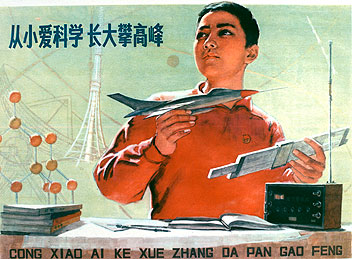Education and Science
The World’s Largest School
Some 200 million pupils were in the late 1970s enrolled in schools of which 160 million attended the primary schools for either five or six years. Those continuing in secondary schools were almost exclusively residing in urban areas. The relatively low rate of economic growth while working age population expanded made it almost impossible to provide enough job opportunities in the cities. Thus, as part of the Cultural Revolution, almost one half of the youngsters in urban cities were persuaded to resettle in rural areas or border regions, although policies were soon to change.
This proved very unpopular both among the resettled youngster and among the farmers who were supposed to care for them and give them meaningful employment. As a result new attempts were made to create employment in service industries and in small-scale industries. These issues dominated the educational debate and how to view the traditional objectives of education. For a period of time both objectives and organization forms were under criticism.
School Reform
In the late 1970s a new school system came into existence that would no longer provide a uniform schooling system but a spectrum of forms that would satisfy varying needs in a society that has to handle its scarce resources in order to carry out a rapid overall modernization of the country. Thus, the earlier politization end uniformity was giving way to knowledge creation and discipline. An important factor in the changing emphasis is to be found in China’s emphasis on rapid industrialization and using advanced science and technology for its development. China was badly lacking in technicians and engineers as China had for along time neglected the training of highly competent people who could be recruited to laboratories and research institutes.
The National Science Conference in spring 1978 formulated the new objectives. It was clearly stated that China did not only have to care about immediate manpower needs but also develop a long-term capability in basic research, high energy physics and astronomy to mention some fields with high priority. The conference at the same time emphasized that China must shape new attitudes among young people to take on future tasks. This was also the starting point for China’s open-door-policy which set China on a very different road towards the future.
New Challenges Today
A couple of decades later on tourists are pouring into China. MacDonald hamburgers and Coca Cola can be found everywhere in the cities. Shanghai and Guangzhou and many other places have rapidly taken on the appearance of Western cities. Living standards are increasing and urban areas have an affluent middle class. China’s population has increased more than twofold since the 1950s. Modern agriculture is being emphasized and China has a “surplus” labour force of several hundred million that must be meaningfully employed. Today many are mobilized in labour-intensive process and assembly plants that at an early stage primarily served the export markets with all kinds Chinese industrial products that are today found everywhere in the world.

Making the Nation Great – Happily towards the Future (315-18-338)

Comprehensive Utilization – Many Things can be Accomplished (314-64-304)

Learning Science in Childhood – To Scale the Peaks (311-18-18)
